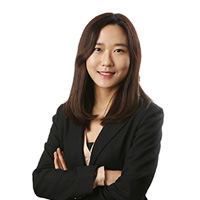[Newsmaker] After 'giant' interest rate hikes, are savers better off?
Tough conditions mean high interest rates advertised for savings accounts are often a mirage
By Jung Min-kyungPublished : Jan. 11, 2023 - 14:50

When a small provincial branch of NongHyup Bank offered an online-exclusive installment savings plan with an annual interest of 8.2 percent in November last year, the news spread like wildfire among savvy savers.
It sold like lottery tickets. Within hours, the bank sold 900 billion won ($707.8 million) of saving products, which was more than five times the size of the branch's total assets of 167 billion won.
The problem was that the rural bank just wanted to attract just 10 billion won of funds, but made a mistake of not setting a limit on the sales. Unable to service such a large amount of high-yield plans, the lender has since been making a desperate plea for customers to cancel their subscriptions.
The story may be a simple cautionary tale for bank officials, but it also shows the rise of savvy savers on the prowl for higher yields amid dismal returns on stock, real estate and crypto investments.
Savers’ disappointment
Kim Ji-hye, whose home loan costs amount to nearly 1 million won a month in principal and interest repayments, has made up her mind to save more to offset the borrowing costs. After a quick search of high-yield savings plans, she found one that carries 6 percent interest from KB Kookmin Bank, one of the largest commercial lenders here. Her loan’s interest currently stands at 6.54 percent.
“As soon as I read the terms of contract, I could not help but feel disappointed. It caps the monthly savings amount at 300,000 won ($234.56) or below and has a fixed term of only six months,” said the 33-year-old office worker in Seoul.
Kim tried other banks and other products, but all that were promoted as guaranteeing yield of above 5 percent were short-term plans, usually of 6 months, or asked for peculiar conditions that she couldn’t meet.
“One of the products with a high yield asked the users to register their pet information, and I don’t have a pet,” Kim noted.
Banks typically advertise savings products emphasizing the maximum rate one can theoretically earn, if they meet certain conditions.
Ownership of a pet is a rather unusual requirement. more common ones include registering the said bank as the customers’ main salary account or meeting a minimum spending standard with a credit card issued by the lender’s affiliate.
Shinhan Bank recently came under fire for a savings plan sold online which it advertised would return a (maximum) 5 percent annual yield on deposits. In reality, many had to settle for just 1.5 percent because they couldn’t meet the prime rate requirements.
According to recent data from the Financial Supervisory Service, South Korea's main financial watchdog, of the 59 savings plans sold by local banks between January 2020 to September 2021, its investors earned just 78 percent of the maximum rate that banks had advertised.
Kim belongs to a large group of Koreans who took the advantage of the pandemic’s easy money policy. With the benchmark rate standing at a record low of 0.5 percent from May of 2020 through August of 2021, many invested in bullish stock, crypto and real estate markets with borrowed money.
Now, the BOK’s benchmark rate has risen to 3.25 percent, the markets plummeted and borrowers are placed in a position where they are heavily burdened by their loans.
Rate hikes’ uneven impact
The average interest rate of credit loans among top five lenders here -- KB Kookmin, Shinhan, Woori, Hana and NongHyup -- gained nearly 4 percentage points from 3.97 percent to 7.85 percent from August 2021 to December last year. The average mortgage rate grew 2 percentage points from 2.88 percent to 4.74 percent in the cited period.
Data seems to suggest that interest on savings moved in tandem with borrowing ratese: The average annual premium yield on savings accounts grew from some 1 percent to 4 percent in the same period. The APY on certificates of deposit (CD) gained slightly less with the figure increasing from some 1 percent to 3 percent.
In reality, however, savers are receiving the full benefit of higher rates, while the nation’s top four major banking groups -- KB, Shinhan, Hana and Woori -- saw heir combined earnings last year hit a record high.
“The savings products with relatively high yields offered by Korean banks are short-term with limited monthly savings, because banks are not willing to assume the risks stemming from possible benchmark interest rate cuts in the future,” Hwang Sei-woon, a senior research fellow at the Korea Capital Market Institute told The Korea Herald.
“They’re asking the customers to bear the risks when they should be the ones handling the money management,” he added.
The expert also pointed out some characteristics of the local industry that make it slow to respond to interest rate fluctuations.
Korea’s loan market is an example of an “oligopoly” where the top five players -- the above-mentioned top 4 and NongHyup -- dominate the market.
“It’s because there’s relatively less competition to attract customers compared with the US market. The five banks are the borrowers’ first choice and they don’t need to fight among themselves to attract customers,” he said.
According to industry data, the outstanding value of CD account deposits managed by the top five banks jumped 24.8 percent on-year to 817.56 trillion won as of mid-December. The outstanding value of savings account deposits gained 7.1 percent to 37.6 trillion won in the same period.
The market also lags in product diversity. “In South Korea, mortgages are usually repaid within 10 years while in the US it is common for investors to have 20-year or 30-year mortgages. This is also reflected in savings products, where banks offer more diverse savings accounts or similar investments to customers.”


















